
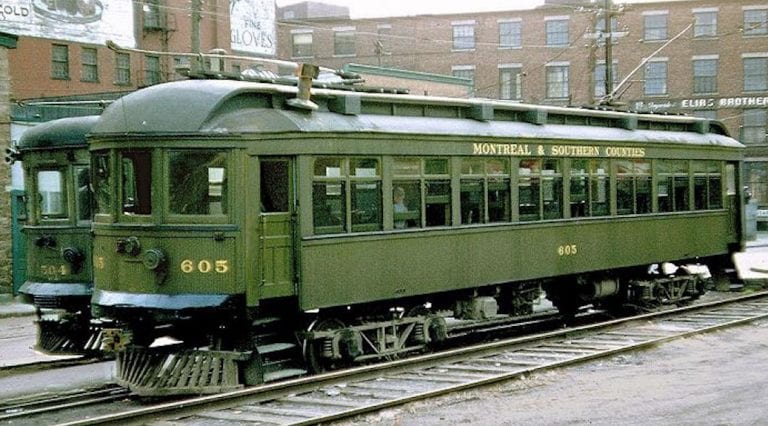
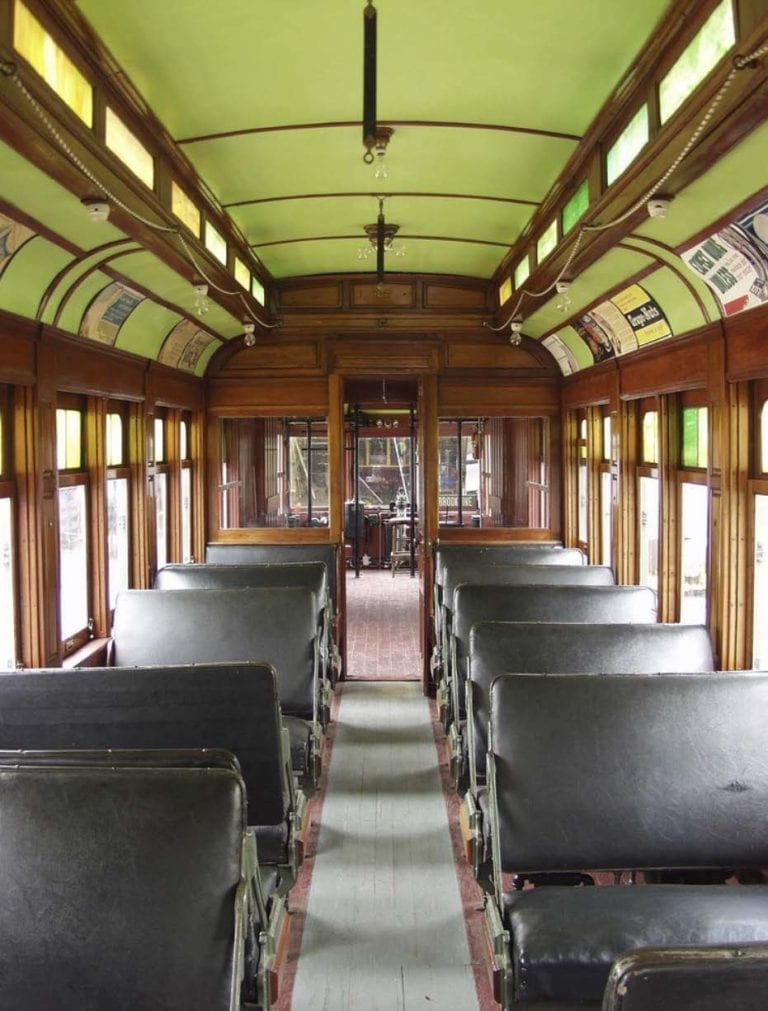
Car 107 of the Montreal & Southern Counties Railway. The motorman can drive the streetcar at either end.
The Montreal, Chambly and Sorel Railway is looking to establish a railway line to Marieville. But to do so, they need a bridge over the Richelieu River. Construction begins in 1873 and will last several years. It employs timber girders resting on concrete columns. During the spring floods of 1894 and 1902, many sections of the bridge are damaged by the loosening ice. On Friday, April 1, 1904, at around seven o’clock, the ice will sweep the bridge away entirely. Fortunately, the train from Saint-Césaire has already crossed it—just five minutes before the collapse. A few months later, the Central Vermont Railway will rebuild the bridge in steel and raise it two metres higher so ice and debris can pass underneath in springtime. |
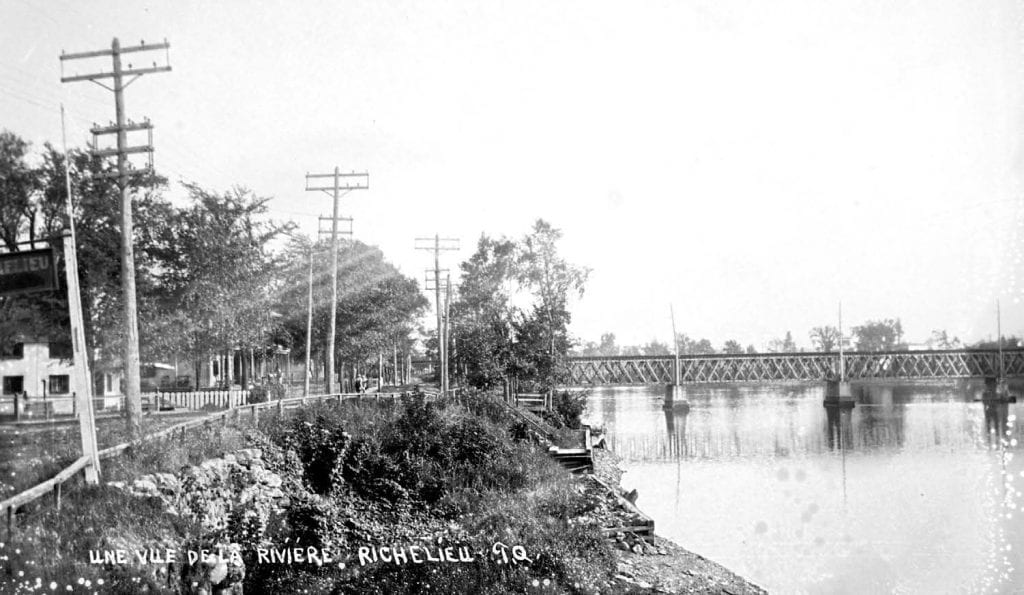
The road alongside the Richelieu River and the railway bridge, which had wooden trusses before it was rebuilt with steel in 1905.
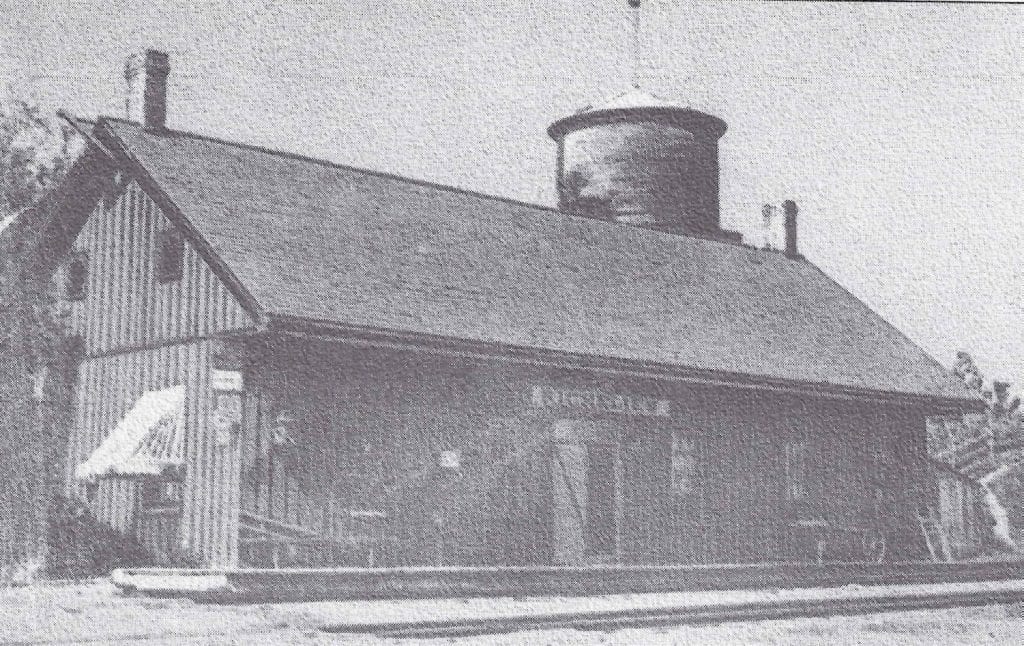
The Richelieu Station in 1904. A hoist can be seen in the upper left of the photo. This is used to lift heavy goods from the baggage carts and swing them onto the platform.
The construction of a wooden bridge over the Richelieu River connects Chambly with Richelieu and makes it possible for railway service to arrive in 1877. The first segment (Longueuil–Chambly) has been inaugurated already by the Montreal, Chambly and Sorel Railway, on September 25, 1873. In 1877, this line is purchased by the Montreal, Portland & Boston Railway, which will now offer service between Longueuil, Chambly, Richelieu, Marieville, Sainte-Angèle, Farnham and Frelighsburg. At this time, the operator behind the line is the South Eastern Railway. On July 1, 1891, the operation passes under the control of the Central Vermont Railway. All through this period, the locomotives run on steam. And for the era, this train is the modern means of transportation between Montreal, the Eastern Townships and the United States.
The wooden station building, with distinctive vertical panelling, is built in the last quarter of the 19th century. Twenty years later, this sheathing is replaced by horizontal planks of the more usual type. In this era, the station is located on Rue Cartier (now 2e rue), at the current location of Parc de la Gare, north of the railway tracks. The first station master is Norbert Daniel Damase Bessette (in office 1880–1894). The exact date of his hiring is unknown, but it is known that the train began passing through Richelieu in 1877. In addition to functioning as a railway stop, the station contains a residence for the station master. His office and the waiting hall face the platform. Behind these two areas, there is a large kitchen and, connected to the waiting hall, a living room, a parlor and three bedrooms. |
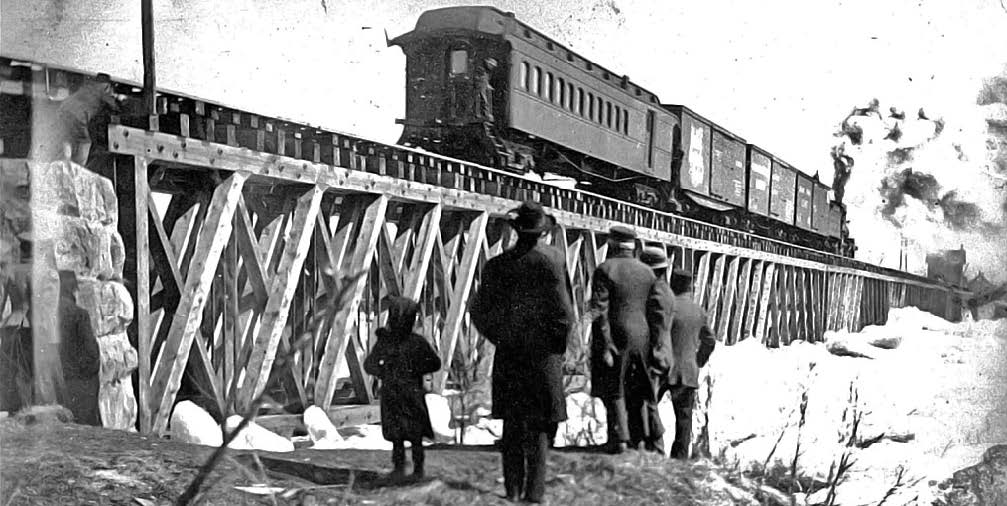
A steam train for the Central Vermont Railway crosses the wooden truss bridge (725 feet long) connecting Chambly and Richelieu in 1904.
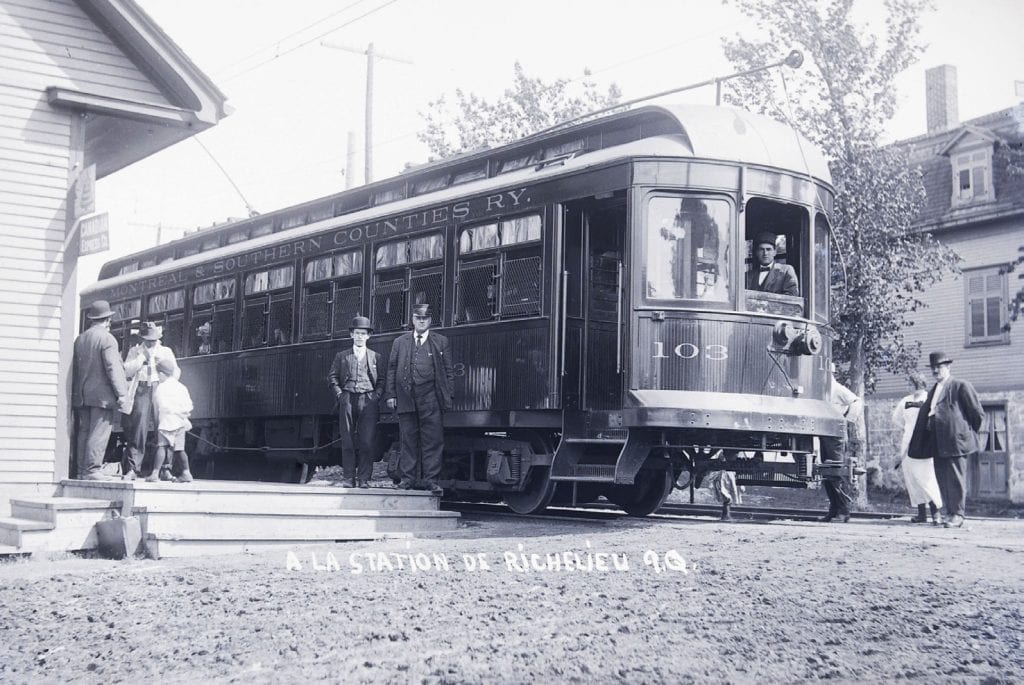
At the Richelieu Station, Car 103 built in 1912.
Marguerite Béique is the daughter of Arthur Béique, who managed Richelieu Station from 1894 to 1925. She describes his daily schedule: “My father used to rise at 6 a.m. and prepare tickets, parcels and mail for the passenger trains bound for Montreal. The first arrived at 6:45, the second at 7:45 a.m. The next train came at 9:30 a.m. from the other direction. Then there was a freight train in both directions every day, and the return of passenger trains at the end of the day. As station master, he had a lot to do besides selling tickets to passengers. He would receive and classify packages for the Express and load them on the train. He also supervised the loading of hay and other merchandise on the freight cars. He had to communicate by telephone and sometimes by telegraph with the Saint-Lambert office, always in English. Once a month, he had to record the accounts for all station operations and prepare the reports, a job that often kept him busy quite late into the night. Added to this were the reports of the maintenance team, which looked after the station yard and the tracks between Chambly and Marieville.”
The Montreal & Southern Counties Railway is incorporated on June 29, 1897. Its aim is to bring electric train service to a number of different counties in Quebec. Construction of the electrified railway line, which is to connect Montreal to Granby, begins in 1908. The train is supplied with 600 volts of electricity from an overhead power line. The line is suspended over the tracks with brackets attached to 35-foot utility poles made of cedar. The Saint-Lambert–Richelieu section is inaugurated on June 28, 1913. By the autumn, electric streetcars are reaching as far as Marieville too. Next, in 1914, it is Saint-Césaire that sees the new streetcars arrive. The service finally reaches Granby on April 29, 1916. |
These electric streetcars will serve Richelieu until October 13, 1956. From that day on, the diesel-powered locomotives of the Canadian National Railway (CNR) take over the line. And just twelve years later, in 1968, comes the final closure of the Richelieu Station. This marks the end of an entire era. The station has played a central role in the life of Richelieu’s community since 1877. |
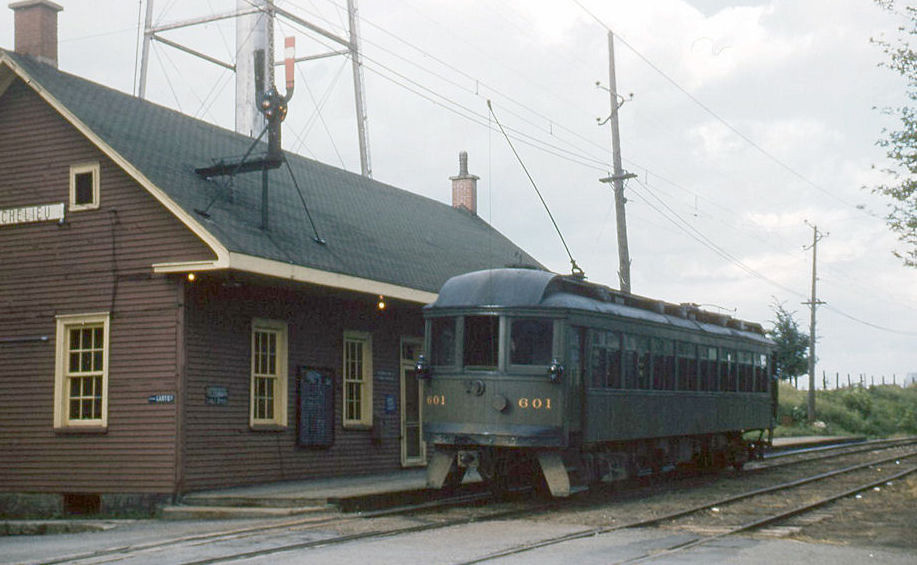
Richelieu Station in June 1954, with Car 601 of the Montreal & Southern Counties Railway.
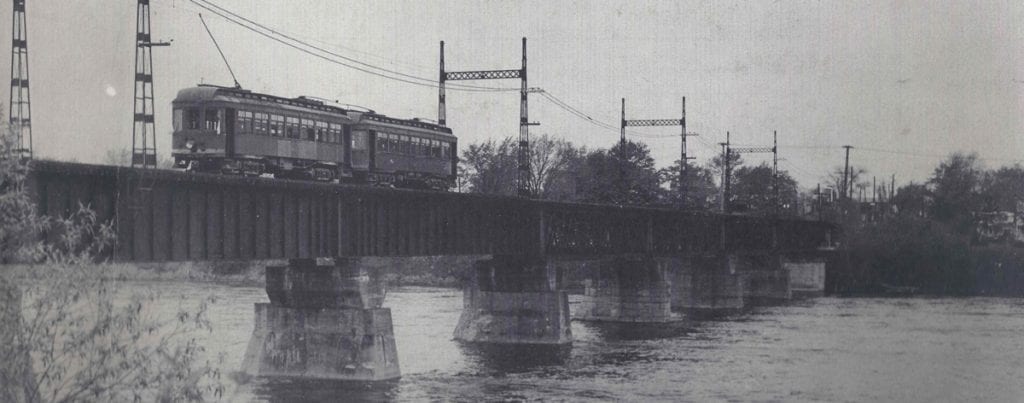
An electric train for the Montreal & Southern Counties Railway crosses the steel bridge in 1951.



Research and text:
Gilles Bachand, historian
Société d'histoire et de généalogie des Quatres Lieux
References and photographs (2020):
Archives of the Société d’histoire et de généalogie des Quatre Lieux
Archives of the Société d’histoire de la Seigneurie de Monnoir